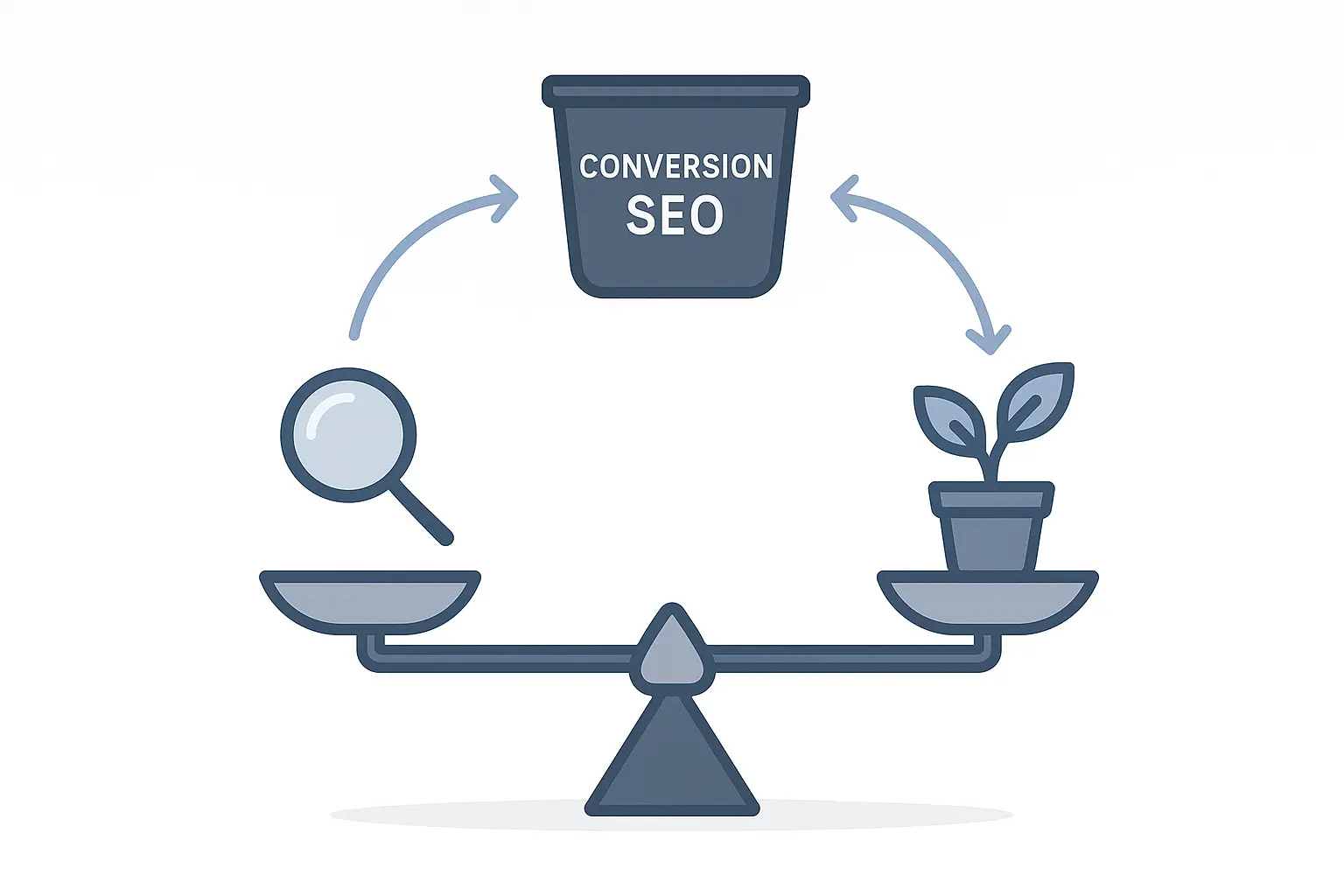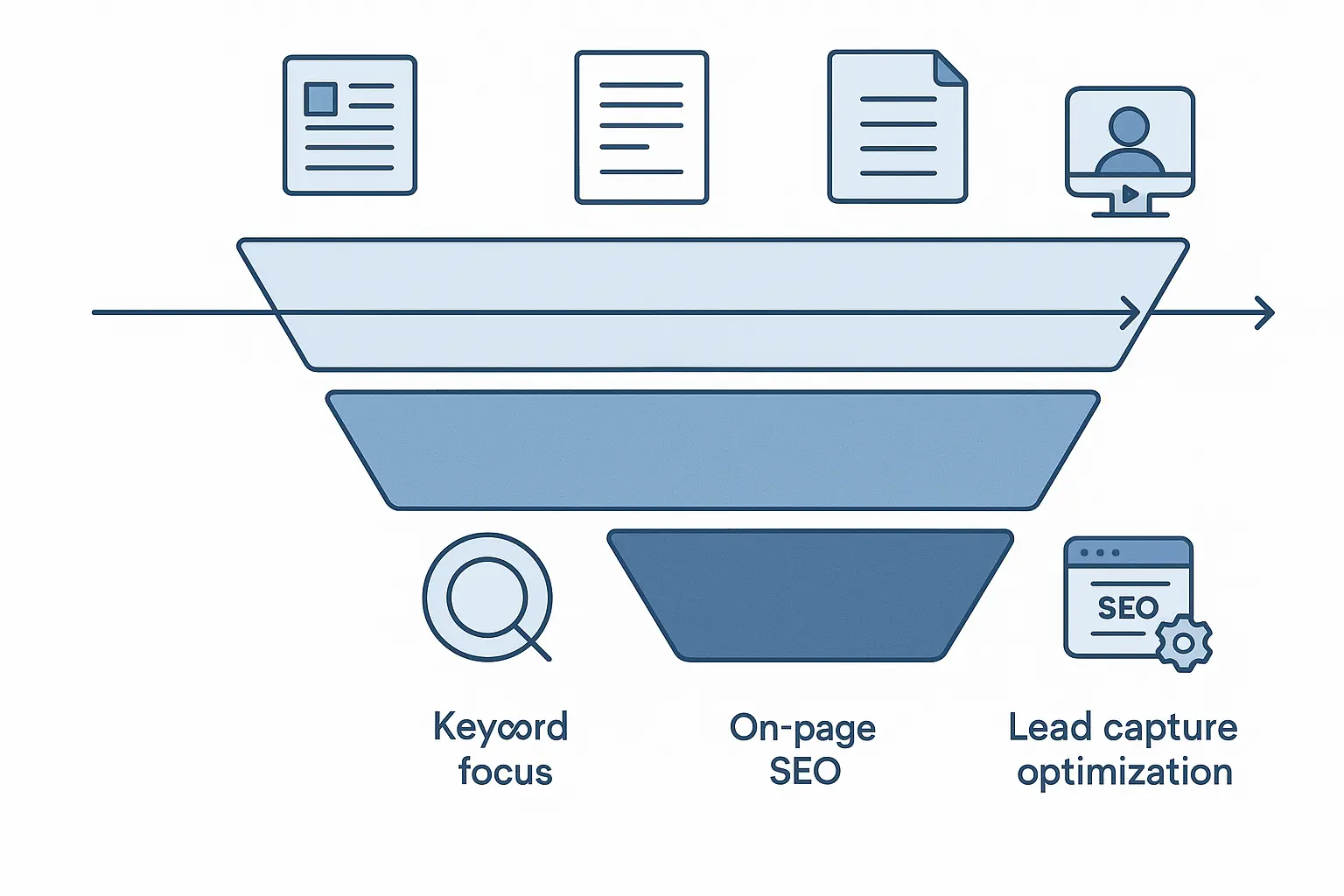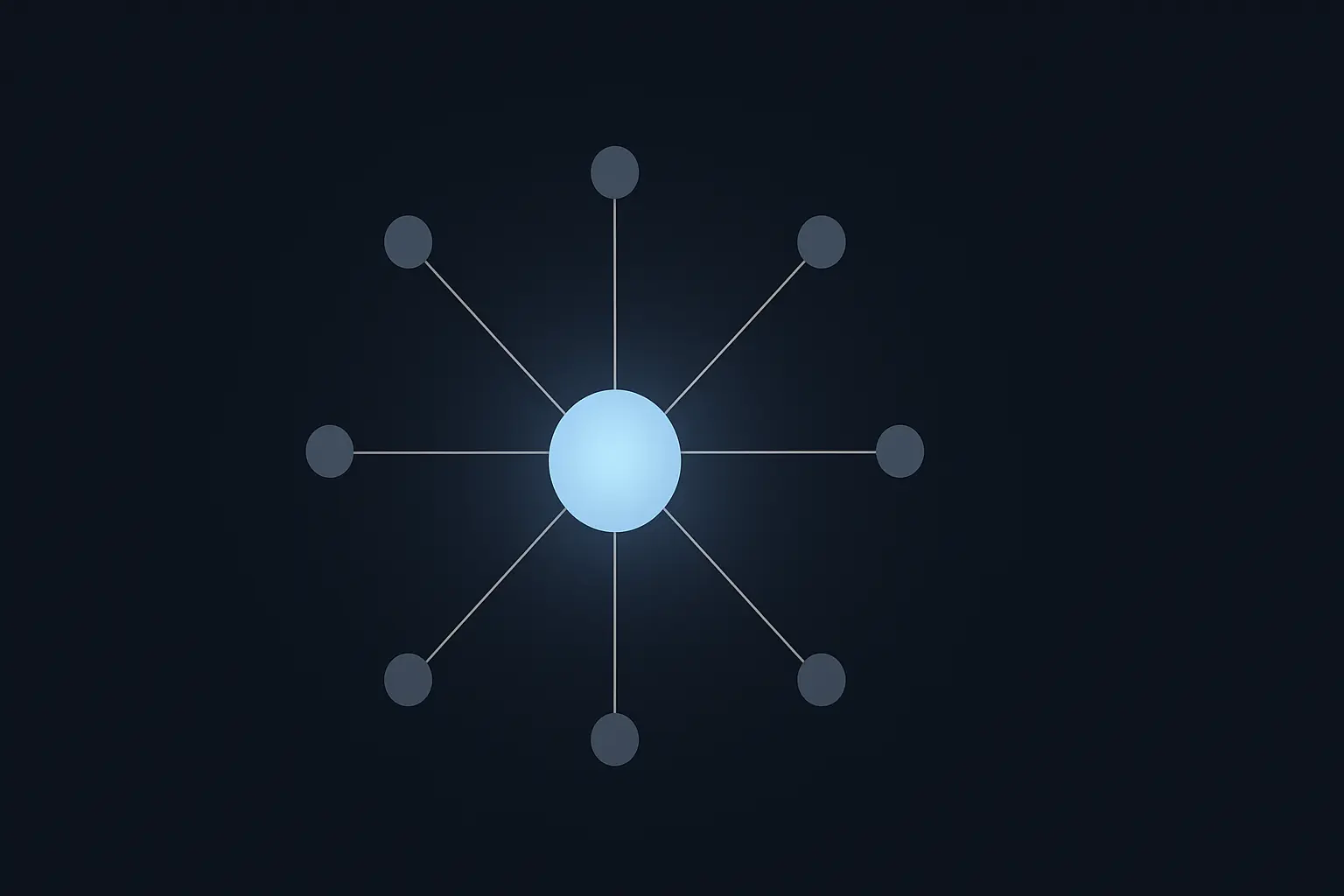Conversion SEO for B2B: How to Nurture Leads in a Long Sales Cycle
Your website traffic is climbing and your keyword rankings are green across the board, but your sales pipeline feels… empty. Sound familiar?
For businesses in B2B SaaS, finance, or enterprise consulting, it’s a frustratingly common story. You’re playing the SEO game and winning by traditional metrics, but those victories aren’t translating into meaningful conversations or closed deals.
Here’s the truth: for high-consideration services, your buyer isn’t looking for a “Buy Now” button. They’re on a long, complex journey of discovery, and your SEO strategy needs to be their guide. This is what Conversion SEO is all about—a strategy focused on building relationships and generating qualified leads, not just attracting clicks.
What Is B2B Conversion SEO and Why Does It Matter?
Conversion SEO isn’t about gimmicks or aggressive pop-ups. It’s the practice of creating and optimizing content that aligns perfectly with a potential customer’s intent at every stage of their decision-making process.
In B2B, where a single purchase can involve multiple departments, six-figure budgets, and a sales cycle spanning months, this approach is non-negotiable. Your prospects are doing serious homework. In fact, research shows that on average, B2B buyers consume 13 pieces of content before making a decision.
They aren’t just looking for a service; they’re looking for a partner. They want proof you deeply understand their problem before they ever consider your solution. This explains why one study found that 80% of business decision-makers prefer to get company information from a series of articles versus an advertisement. They want education, not a sales pitch.
The Modern B2B Buyer’s Journey: A Maze, Not a Funnel
We used to think of the buyer’s journey as a neat, linear funnel: a visitor arrives, reads a page, and contacts sales. Today, that model is broken.
The modern B2B buyer bounces between awareness, consideration, and decision stages. They might read a blog post, leave, get a recommendation from a colleague on LinkedIn, return to read a case study, and then search for a third-party review. Your job is to be the most helpful voice they encounter at each of these chaotic touchpoints.
This non-linear path means you can’t just optimize for the final sale. You have to create a web of valuable content that captures their attention early and holds it throughout their entire research process.

A Content Blueprint for Every Stage of the B2B Buyer’s Journey
To build a true lead-nurturing engine, you need to map your content directly to the questions your buyers are asking at each phase of their journey.
Awareness Stage: Answering Your Prospect’s Initial Questions
At this stage, potential customers are experiencing a problem but may not know how to name it or what solutions exist. They are looking for education, not products.
This presents a massive opportunity. A staggering 71% of B2B buyers start their research with a generic (unbranded) search. They’re typing questions like “how to reduce customer churn” or “cybersecurity risks for financial firms” into Google. Your goal is to be the top answer.
- Content Focus: Foundational, educational articles that address their core pain points.
- Examples: “What is Customer Lifetime Value?”, “A Beginner’s Guide to SOC 2 Compliance,” “5 Signs Your Manual Invoicing Process is Hurting Your Business.”
- The “Conversion”: There isn’t one—and that’s the point. The goal here is to be helpful and build initial trust. No forms, no gates, just pure value.
Consideration Stage: Guiding Prospects Toward a Solution
Once they can name their problem, buyers move on to evaluating potential solutions. They’re now comparing approaches, methodologies, and frameworks. This is where you transition from teacher to trusted advisor.
Your content should help them navigate their options, with your unique approach positioned as a compelling choice. This is also the first time you should ask for something in return—like an email address. After all, only 5-10% of B2B website visitors are ready to buy. Your goal with the other 90-95% is to earn the right to keep the conversation going.
- Content Focus: In-depth, solution-oriented content that showcases your expertise.
- Examples: “X vs. Y: Choosing the Right Cloud Security Model,” “The Ultimate Checklist for Migrating to a New CRM,” downloadable whitepapers, or webinars.
- The “Conversion”: A “soft” conversion. Instead of “Request a Demo,” offer a “Download the Free Guide” or “Register for the Webinar.” You provide high-value content in exchange for their contact information and officially turn an anonymous visitor into a lead.

Decision Stage: Providing Proof and Justifying the Investment
At the bottom of the funnel, your prospect is close to making a choice. They may believe your solution is the right one, but they need to justify the investment to themselves and their team. They’re looking for proof, specifics, and ways to reduce risk.
Your content here should be laser-focused on your specific service, answering practical questions about implementation, pricing, security, and results. This is where you demonstrate tangible value and make it easy for them to choose you. This meticulous nurturing pays off. According to The Annuitas Group, nurtured leads make 47% larger purchases than non-nurtured leads.
- Content Focus: Product- and service-specific content that builds confidence.
- Examples: Detailed case studies, pricing explanation pages, implementation timelines, security documentation.
- The “Conversion”: A “hard” conversion—the “Request a Demo,” “Get a Custom Quote,” or “Talk to Sales” call-to-action that moves them into the sales pipeline.

Build a Content Moat with the Topic Cluster Model
Randomly publishing blog posts won’t work. To truly dominate a topic and guide buyers effectively, you need to build a “content moat” around your core services. This is also known as the topic cluster model.
It works by creating one massive, authoritative “pillar page” on a broad topic (e.g., “Enterprise SEO Strategy”) and surrounding it with dozens of more specific “cluster” posts (e.g., “technical SEO for large sites,” “international keyword research,” “scaling content production”) that all link back to the pillar.
This structure accomplishes two powerful things:
- It signals to Google that you are a comprehensive authority on a subject, boosting your rankings for the entire topic.
- It creates a seamless learning path for your visitors, encouraging them to stay on your site and consume more of your expert content.
This interconnected approach is a cornerstone of a modern omnichannel SEO strategy, ensuring your expertise is visible and consistent wherever your ideal customer looks for answers.
Frequently Asked Questions About Conversion SEO
How is this different from regular SEO?
Regular SEO often treats traffic and rankings as the end goal. Conversion SEO sees them as the starting point. Its primary goal is to generate qualified leads and guide them through a complex buying journey with targeted, intent-matched content.
How long does it take to see results?
For high-consideration B2B, this is a long game. You may see traffic increases from awareness-stage content in 3-6 months, but it can take 9-12 months or more for that traffic to mature into high-quality, sales-ready leads. The goal is to build a sustainable pipeline, not chase quick wins.
How do you measure the success of Conversion SEO?
You move beyond basic metrics like traffic. Key success metrics include:
- Number of marketing qualified leads (MQLs) from organic search.
- Content-assisted conversions (which blog posts were read before a demo request).
- Decreases in sales cycle length.
- Increases in lead-to-close conversion rates.
Can this be automated?
While the strategy requires human expertise, the execution can be significantly streamlined. Modern agencies increasingly rely on AI-powered SEO automation for tasks like topic clustering, content briefing, technical monitoring, and performance reporting. This frees up strategists to focus on the high-value work of understanding the customer’s journey.
What if my agency doesn’t have the resources to do this?
Building out a full-funnel content program is resource-intensive. For agencies looking to offer this service without building a large in-house team, many find success by working with a white-label SEO partner who can handle the execution behind the scenes, allowing the agency to focus on client strategy and relationships.
From Browser to Buyer: A Smarter SEO Strategy
For high-consideration B2B services, SEO is not a one-click transaction. It’s a long-term conversation. By shifting your focus from simply attracting visitors to guiding them with valuable, stage-appropriate content, you transform your website from a digital brochure into a powerful, automated lead-nurturing machine.
Given that SEO drives over 1000% more traffic than organic social media, the potential to fill your pipeline with ideal customers is immense. You just have to meet them where they are.
Start by auditing your own content. Does it map clearly to the awareness, consideration, and decision stages? Identifying those gaps is the first and most important step toward building an SEO strategy that does more than just rank—it converts.

